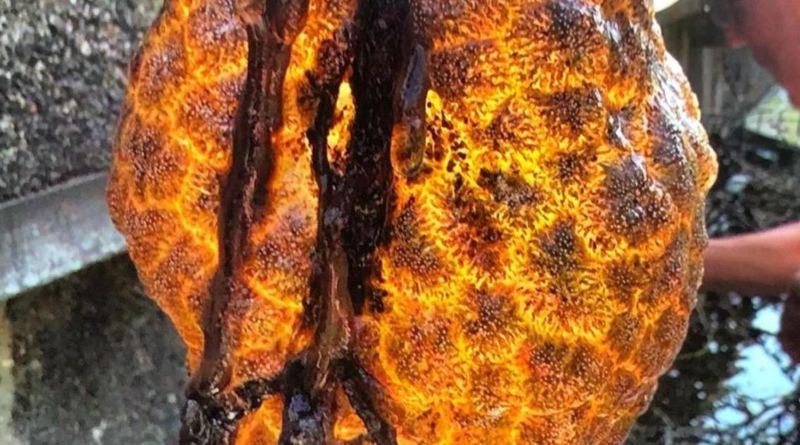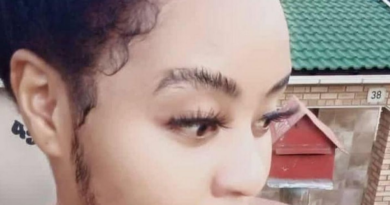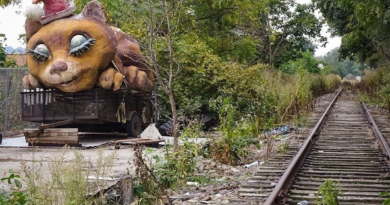Bizarre ‘glowing’ orange bag of animals pulled from Dutch river – Metro.co.uk
NEWS… BUT NOT AS YOU KNOW IT
Ecologists in a Dutch city were baffled when presented with a ‘glowing’ orange bag of wildlife.
The rare bryozoans – small invertebrates which can form in groups of thousands, forming a ‘bag shape’ – were discovered on the bottom of a floating island in Utrecht, Holland.
Ecologist Anne Nijs told AD: ‘This was hanging on the bottom of a floating island. These are animals that form a colony together: water bag bryozoans.
‘Multiple colonies can grow together into floating bags of up to 2 meters in diameter. In America they are also called “the blob”.’
The ‘glowing’ bag is actually multiple animals living in a colony, Ms Nijs said, and they aren’t common in the Netherlands.
‘But fortunately they do not harm the environment here,’ she added.
‘A bag can become 2 meters in diameter. That bag then attaches itself to something,’ she said.
Regardless, the sight of a bright orange floating ‘bag’ of multiple organisms is not for the light hearted.
Bryozoans are common in America, but have spread across the globe in the past century.
Earlier this year, mass amounts of them were spotted in an reservoir in Oklahoma, sparking conspiracies of ‘alien egg pods’.
Bryozoans are clumps of creatures known as zooids, they are a fraction of a millimeter long and form the slimy mass.
Moment Putin is left absolutely seething at BBC reporter over question about Ukraine
Man complaining of indigestion finds out it’s something more skin-crawling
Rollercoaster breaks down mid-ride forcing people to walk down 70ft high track
Sex attacks on Russian children surged 77% after Putin released convicts for war
They can self-clone because they have both male and female reproductive organs.
Metro’s on Whatsapp! Join our community for breaking news and juicy stories.
This means they can also reproduce asexually if one breaks off from a colony and allows them to reproduce in even greater numbers.
They mainly feast on bacteria and phytoplankton which is found in the water.
Get in touch with our news team by emailing us at webnews@metro.co.uk.
For more stories like this, check our news page.
MORE : Dutch artist Joost Klein drops out of Eurovision 2025 after police investigation
MORE : Runaway pet causes havoc for drivers after forcing eight motorways to close
MORE : My cat disappeared for 9 years – this is where we found him
Privacy Policy
Get us in your feed




